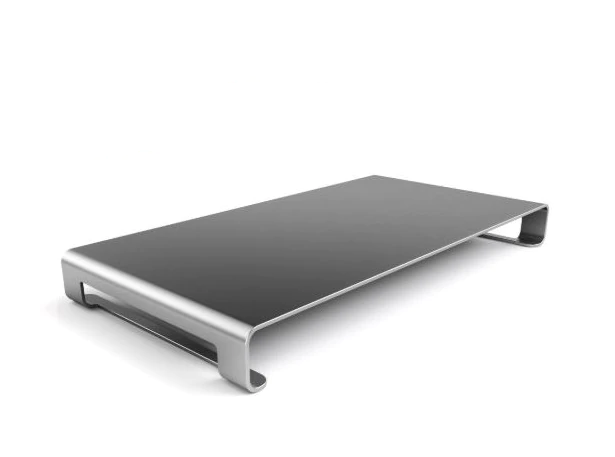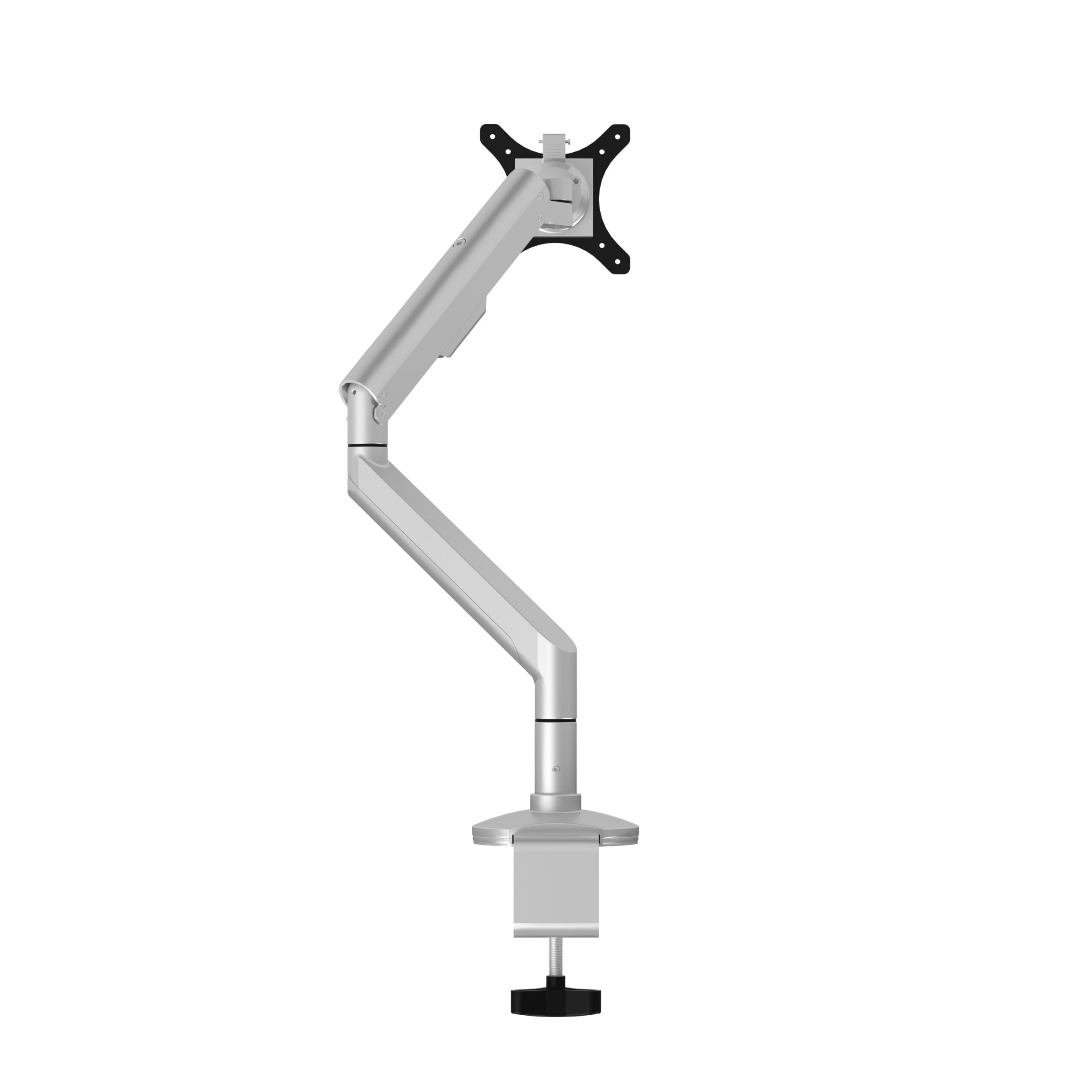With the growing emphasis on healthy working styles, apart from standing desks and standing desk converters, there is another office equipment that can help us build ergonomic workstations, and that is monitor stands and monitor arms, which are in It is more and more widely used in home and office crowd.
If you spend a lot of time in front of a screen during the day, they’ll be a worthwhile investment for you. Because using a monitor stand or arm not only improves your posture and relieves neck strain, it also optimizes your desk space and keeps it tidy.
A wide selection of monitor stands and monitor arms gives you more freedom and flexibility.
So if you decide to add this setup to your daily work, the next step is to know which type to choose. This article will help you decide which one is more suitable for your office needs by briefly introducing and analyzing their pros and cons.
 |  |
What is a monitor stand?
The monitor stand is the perfect combination of simplicity and functionality, and unlike a mechanical rise, it’s not adjustable – its main feature is simplicity. Just place it on the desktop, not only for computer monitors, but also for laptops, printers, players and other devices. It is also easy to remove when not needed. If you just need a simple computer rack, you can consider it.
What is a monitor arm?
Compared to a monitor stand, the monitor arm creates a neater work surface for you, provides extra space for your office supplies, and provides the ability to customize the monitor’s position on all X, Y, and Z axes. This is important if you have limited space or want to easily adjust the monitor to a comfortable height. It can be mounted on a desk or even a wall, and the monitor basically floats in the air and can be turned and moved as needed. Multiple monitors can also be installed at one time.
What are the pros of a monitor stand?
Monitor stands are generally less expensive than arms, and are suitable for users on a budget.
The structure is more stable, just like it is placed on a normal desktop, it will not wobble when in use.
Stands are also much easier to install without having to bother mounting or drilling holes. If you’re not keen on DIY, or don’t have the installation tools to fit a monitor arm, then the monitor stand is obviously more advantageous.
What are the cons of a monitor stand?
It’s bulky overall and takes up more desk space, but the well-designed stand has some storage space at the bottom for your books, documents, stationery, and even a full-size keyboard.
The stand is difficult to make a profound adjustment, only the distance of the monitor can be adjusted, and other items need to be removed during the adjustment process. The height and angle of the monitor cannot be adjusted, so you need to measure your sitting and standing height before purchasing. However, some stands with column-style stackable legs also allow you to choose from several heights.
What are the pros of a monitor arm?
When the monitor sits on a desk, it takes up unnecessary space. The installation method of clipping on the back of the desk makes the monitor suspended, which creates more desktop space. The space created below can be used for other purposes, allowing you to use the desktop more efficiently.
The monitor arm usually has built-in cable management to keep your workstation clean and tidy. An organized work environment can help people stay focused at work.
The arm lets you customize the position of the monitor, something you can’t do with a stand.
By tilting, adjusting and rotating, you can precisely position the screen distance, height and angle, increasing the flexibility of your workplace and ensuring a comfortable working position.
A monitor arm that can be adjusted in multiple directions offers great ergonomic advantages, but a good monitor arm can do much more than that.
Some arms support multiple monitors, for drafting users, video editing users, and even flight game enthusiasts, dual-floating or triple-floating monitors offer wider viewing angles, easier video editing operations, and more intuitive image contrast, thus increasing productivity.
What are the cons of a monitor arm?
Mounting the monitor arm can be a bit of a hassle, you’ll have to take the time to read the instructions and use tools like a hex wrench, as detailed in our previous arm mount article.
Whether it is a clip mount or a grommet mount, the arm position cannot be easily moved after the installation is complete.
As each monitor arm has weight and size constraints. If you get an arm that isn’t strong enough to support your monitor, you may find that the gas spring sinks under its weight and lowers your screen to an unusable angle.
Check that the VESA and maximum loading capacity match your monitor’s specifications before buying.
Finally, monitor arms cost more than monitor stands, which can be a holding-back factor.
Which one to choose?
In general, a monitor stand is usually a good choice if you have plenty of desk space and you don’t need to move the monitor around often, or if you work more with a laptop.
If desk space is limited, or if you often share the screen with colleagues to discuss work, a monitor arm is obviously a better option.
There are many considerations when buying a monitor stand or arm.
Monitor Weight and Dimensions
Depending on the model, monitors can weigh between 10 and 44 pounds. It’s important to check the weight limit of the monitor stand or arm. Essentially, each stand or arm has a weight limit, which is generally stated on the packaging.
Therefore, please verify the weight of the monitor and compare it with the parameters of the stand or arm to avoid accidents that cause the stand or arm to break or the monitor to fall due to its inability to bear the weight.
Material
It is important to purchase a long-lasting product. So you don’t have to replace it frequently or put your equipment at risk of accidents and damage.
Aoke’s products are all made of premium cold-rolled steel, which are of reliable quality and can be assured to buy.
Adjustability/Height
For purchase purposes that promote good posture, it should be ergonomically in height. Monitor arms generally have adjustable options to move and rotate the screen all-around and multi-angle. But the non-adjustable nature of the monitor stand requires you to carefully calculate the height before purchasing.
Ventilation
If you use monitor arms then you won’t face ventilation issue because the screen does not touch any surface while the monitor is in use.
When the monitor is put on a stand with no openings for airflow, you will have the problem of overheating the machine due to long working hours. So keep that in mind when choosing a monitor stand.
Budget
Keep your maximum budget in mind to ensure you don’t overspend, and try to choose a monitor stand or arm with a high configuration within the range to achieve a better user experience.
With these factors in mind, it will be easier for you to proceed to search for the most effective and optimal monitor stand or arm for your workspace.
Is a monitor stand or arm worth it?
No matter what type of monitor stand you choose, it’s a great addition to your workplace. Most people can use it to quickly improve their working space, relieve back, neck and eye discomfort, and raise work efficiency.
Add a simple monitor stand or arm, you can turn your tired old countertop into a standing desk.
